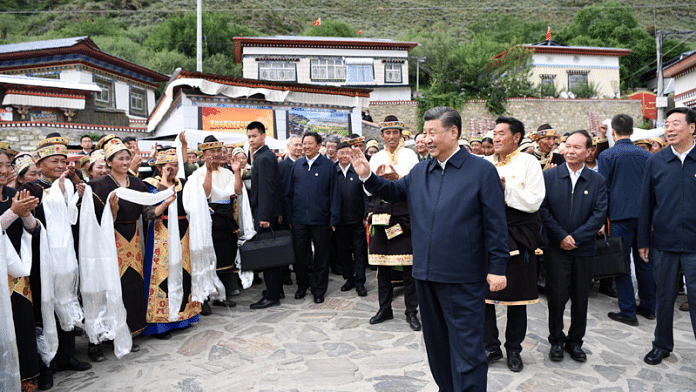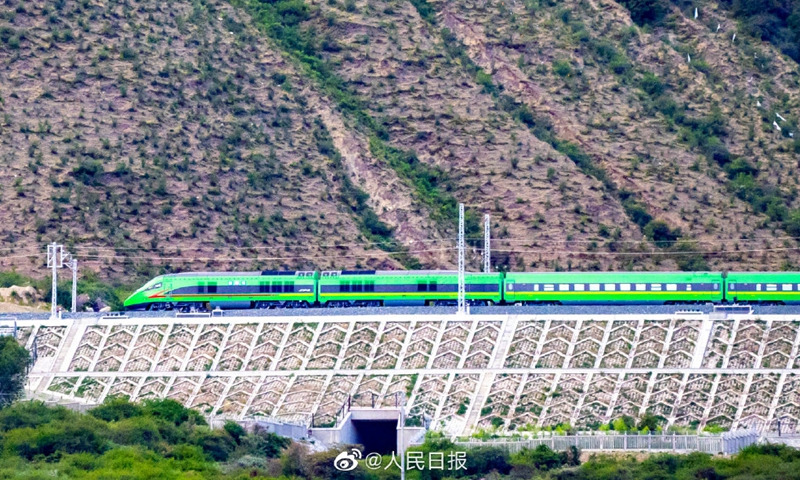Amid US-China Tensions, US State Department spokesman Ned Price said the United States stands with the Philippines after the latter’s recent standoff with China in the South China Sea.
“The United States stands with our ally, the Philippines, in the face of this escalation that directly threatens regional peace and stability, escalates regional tensions, infringes upon freedom of navigation in the South China Sea as guaranteed under international law, and undermines the rules-based international order,” he said.
According to Price, Washington “strongly believes that PRC actions asserting its expansive and unlawful South China Sea maritime claims undermine peace and security in the region.”
On Thursday, China said that two supply vessels from the Philippines trespassed the waters of the disputed Nansha Islands without Beijing’s consent, prompting Chinese coast guard ships to take necessary measures. China’s Coast Guard ships blocked two Philippine boats carrying food to the military on an island in the South China Sea.
The Philippine Foreign Ministry condemned China’s actions, which, in its opinion, could threaten relations between Beijing and Manila.
For decades, China has been in disputes with several countries in the Asia-Pacific region over the territorial belonging of a number of islands in the South China Sea, on the shelf of which significant reserves of hydrocarbons have been discovered.
The situation in the region is complicated by regular passages of American warships, which, according to the Chinese Foreign Ministry, violate international law and undermine China’s sovereignty and security. Despite protests from Beijing, Washington has repeatedly said that the United States will sail wherever international law permits.
China Muzzling Taiwan?
At a time when tensions between China and the West are at an all-time high, Beijing has tightened its control over the Tibet Autonomous Region bordering India.
BBC reported that ever since Chinese President Xi Jinping’s July visit to Tibet, the communist nation has tightened its grip over the region. Following the high-level visit, there has been an increase in investments in infrastructure development and military facilities.
The past few months have witnessed several military exercises in the Tibet region amid a protracted border standoff with India. According to BBC, the Chinese state-owned media is also making an effort to erase the English name of Tibet, thereby diluting the autonomous status of Tibet.

China has given autonomous status to regions with higher minority populations. These provinces do not have legal rights but they do have legislative rights and the right to self-governance.
The Western media has been highlighting what they call China’s attempts to suppress minorities and consolidate its communist ideology.
The Shifting Realities In Tibet
President Xi Jinping who has projected himself as the supreme leader of China became the first President in over three decades to visit this region.
Following his visit, a huge investment was announced. The communist government announced an investment of 260 yuan through a resolution shortly after, in September.

Even before the dust had settled on this unusual investment, the National People’s Congress passed a law to strengthen security on Tibetan borders. This law is significant because it comes at a time when China is embroiled in a border standoff with India in the Himalayas.
A few days ago, the state-controlled Global Times had talked about the development of a welfare village at the Chinese borders in an article. It had elaborated about the utility of this village in border security and also published the data regarding the development of villages in India and Bhutan that border Tibet, reported BBC Hindi.
Western Focus on Tibet
As the Sino-India standoff at the LAC in Western Ladakh shows no sign of abating and Chinese presence along the border intensifies, Tibet assumes significance in a wider scheme of things.
With increasing strategic cooperation between the United States and India and enhanced western focus on Tibet, Chinese endeavors are not particularly surprising.
Earlier this month, China revealed that it had conducted a number of military exercises in western Tibet as an answer to Indian exercises in Ladakh. This was followed by another report by Global Times that stated China had made structural changes in a bid to give relief to soldiers camping in the mountains.
Tibet was a buffer state between British India and China. The borders drawn by the British between India and Tibet were inherited by independent India.
However, with multiple disagreements and China’s non-committal attitude related to agreeing upon borders led to China annexing Tibet and establishing full control in 1951.

The Communist Party of China has been celebrating 70 years of integration of Tibet with the Chinese mainland. In relation to these celebrations, China’s top diplomat Wang Yi had visited Lhasa right after the President’s visit.
He has categorically stated that “No country has the right to point at China regarding Tibetan affairs”, as reported by Global Times.
The Chinese have also been making subtle pushes for Mandarin in the region. This development comes even as the US recognized the elections to the exiled Tibetan government in Dharamshala. China has maintained that recognizing and aiding the exiled government is inimical to its interests and damaging for the bilateral relationship.
The West has also raised the issue of human rights violations by China, in both Tibet as well as Xinjiang. It passed a resolution to this effect in June this year, upping the ante against China and raising the stakes in Tibet, after the global spotlight fell on Xinjiang and Chinese treatment of the Uyghur Muslims.
Continued research of PLA developments in #Tibet, #China uncover another suspected underground facility (UGF) under construction since 2019, the unit is located near a large military logistics hub & is south of an existing UGF in Shannan pic.twitter.com/ydskdZ8zNj
— Damien Symon (@detresfa_) June 7, 2021
China considers western accusations as interference in its internal affairs. With bilateral relations at its nadir and tensions rising by the day, China has asserted control over Tibet to send a strong message to the United States. This became apparent as it appointed Wu Yingie as the Secretary of CCP in Tibet.
It’s worth noting that Wu has been sanctioned by the US, the UK, and the European Union over alleged human rights violations in the Xinjiang region.
Hence, Bejing making him “in charge” of Tibet reflects China’s aggressive and defiant posture when it comes to this strategic region.
Jayanta Kalita, editor of Eurasian Times had earlier opined that China has rapidly improved infrastructure in areas close to the Line of Actual Control (LAC), its disputed border with India.
“(China) has expanded the railway network connecting the remote parts of Tibet with mainland China, a move to assert Beijing sovereignty and supremacy and counter Western narrative in support of the Tibetans’ right to self-determination,” he said.
In August this year, the Chinese PLA used the newly-inaugurated bullet train to transport its PLA troops to a remote exercise field in Tibet, The EurAsian Times Reported.
- Contact the author at sakshi.tiwari9555@gmail.com
- Inputs from Sputnik News Agency
- Follow EurAsian Times on Google News




